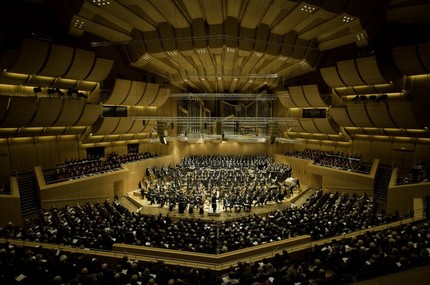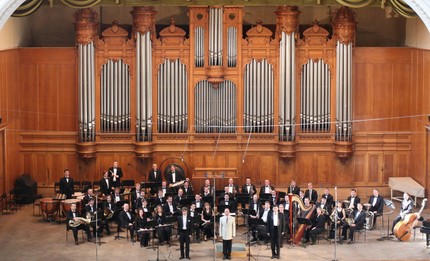
Munich Philharmonic Orchestra (Münchner Philharmoniker) |
Münchner Philharmoniker

The Munich Philharmonic Orchestra was founded in 1893 on the initiative of Franz Keim, the son of a piano factory owner, and was originally called the Keim Orchestra. From the first years of its existence, the orchestra was led by such famous conductors as Hans Winderstein, Hermann Zumpe and Bruckner’s student Ferdinand Löwe. Thanks to this, the orchestra demonstrated a high level of performance, and its repertoire was very extensive and included a large number of works by contemporary composers.
Also, from the very beginning, the most important part of the artistic concept of the orchestra was the desire to make its concerts accessible to all segments of the population, thanks to performance programs and democratic pricing policy.
In 1901 and 1910 the orchestra performed Gustav Mahler’s Fourth and Eighth Symphonies for the first time. The premieres were held under the direction of the composer himself. In November 1911, six months after Mahler’s death, the orchestra conducted by Bruno Walter performed for the first time Mahler’s Song of the Earth. Shortly before this, the group was renamed the Orchestra of the Concert Society.
From 1908 to 1914 Ferdinand Löwe took over the orchestra. On March 1, 1898, a triumphal performance of Bruckner’s Fifth Symphony took place in Vienna under his direction. In the future, Ferdinand Loewe repeatedly conducted the works of Bruckner and created the tradition of performing the symphonies of this composer that exists to this day.
During Sigmund von Hausegger’s (1920–1938) tenure as musical director of the orchestra, the orchestra was renamed the Munich Philharmonic Orchestra. From 1938 to 1944, the orchestra was headed by the Austrian conductor Oswald Kabasta, who brilliantly developed the tradition of performing Bruckner’s symphonies.
The first concert after World War II was opened by Eugen Jochum with an overture to Shakespeare’s A Midsummer Night’s Dream by Felix Mendelssohn, whose music was banned under National Socialism. In the post-war years, such outstanding masters as Fritz Rieger (1949–1966) and Rudolf Kempe (1967–1976) conducted the orchestra.
In February 1979, Sergiu Celibidache conducted his first series of concerts with the Munich Philharmonic Orchestra. In June of the same year, he became the musical director of the band. Together with Sergiu Celibidache, the Munich Orchestra has toured many European cities, as well as South America and Asia. The performances of Bruckner’s works, which took place under his direction, were recognized as classics and significantly increased the international prestige of the orchestra.
From September 1999 to July 2004 James Levine was Principal Conductor of the Munich Philharmonic. With him, the musicians of the orchestra made long tours of Europe and America. In January 2004, Maestro Zubin Mehta became the first guest conductor in the orchestra’s history.
Since May 2003 Christian Thielemann has been the band’s music director. On October 20, 2003, the Munich Philharmonic Orchestra had the honor of performing before Pope Benedict XVI in the Vatican. The concert was listened to by 7000 invited guests, and maestro Tieleman was at the conductor’s stand.
Music directors:
1893-1895 – Hans Winderstein 1895—1897 — German Zumpe 1897-1898 – Ferdinand Loewe 1898-1905 – Felix Weingartner 1905—1908 — Georg Schneefoigt 1908-1914 – Ferdinand Loewe 1919-1920 – Hans Pfitzner 1920-1938 – Sigmund von Hausegger 1938-1944 — Osvald Cabasta 1945-1948 – Hans Rosbaud 1949—1966 — Fritz Rieger 1967-1976 – Rudolf Kempe 1979—1996 — to Sergiu Celibidake 1999-2004 – James Levine 2004-2012 – Christian Thielemann 2012—2014 — Lorin Maazel 2015 — Valery Abisalovich Gergiev
Source: mariinsky.ru





